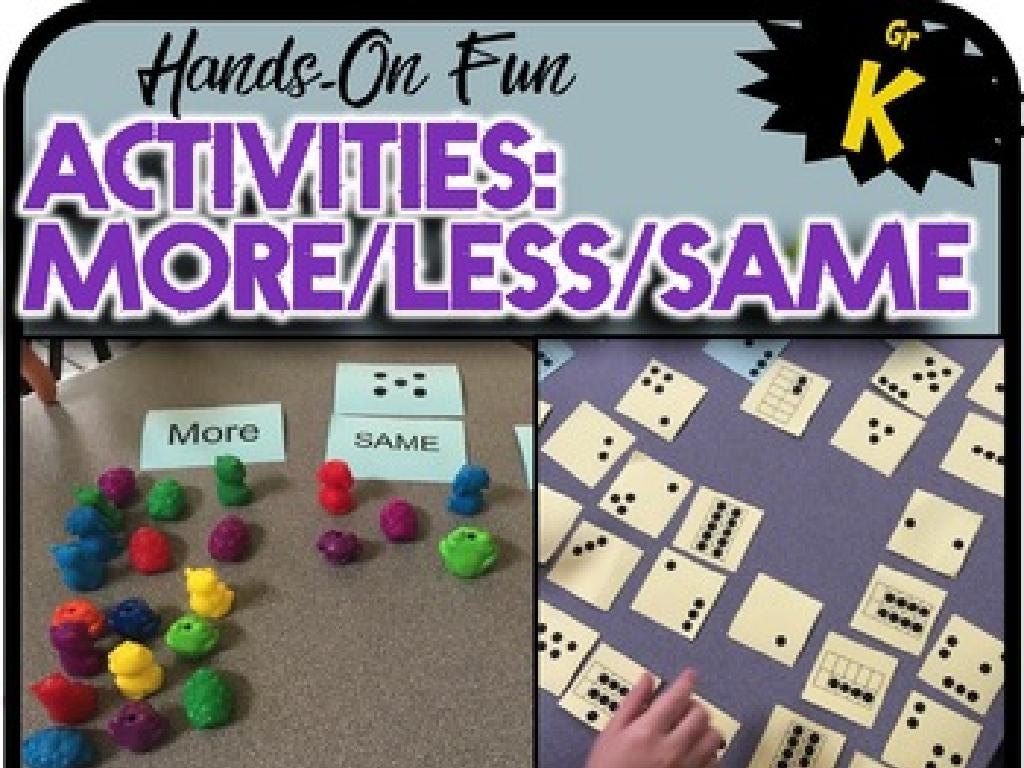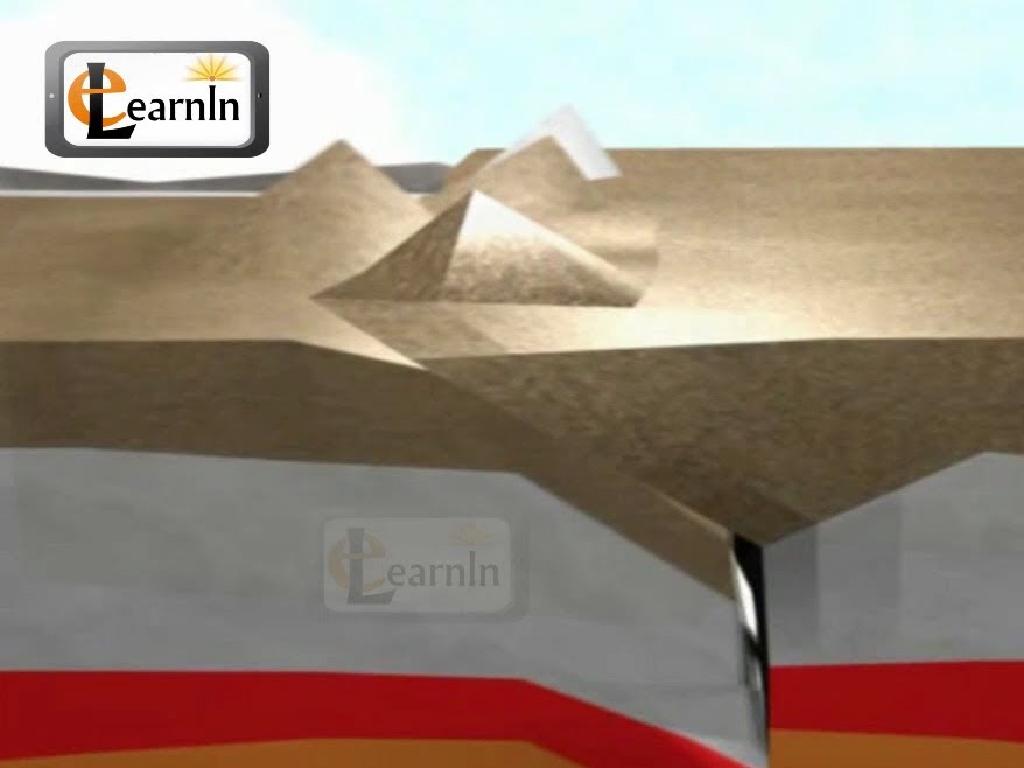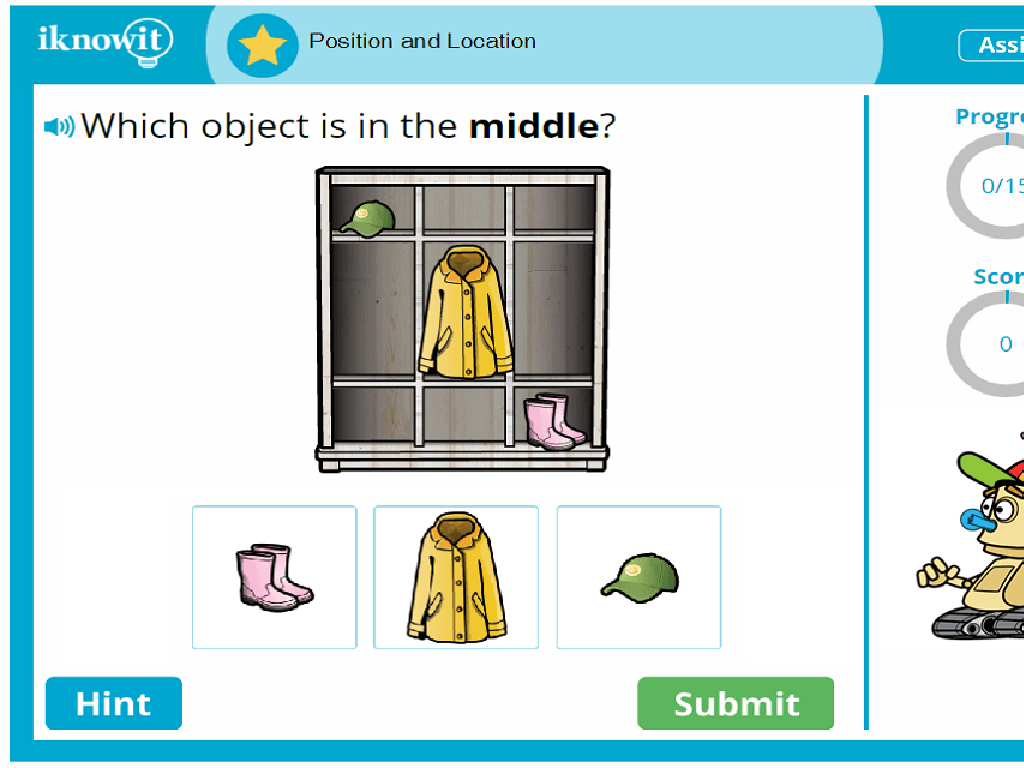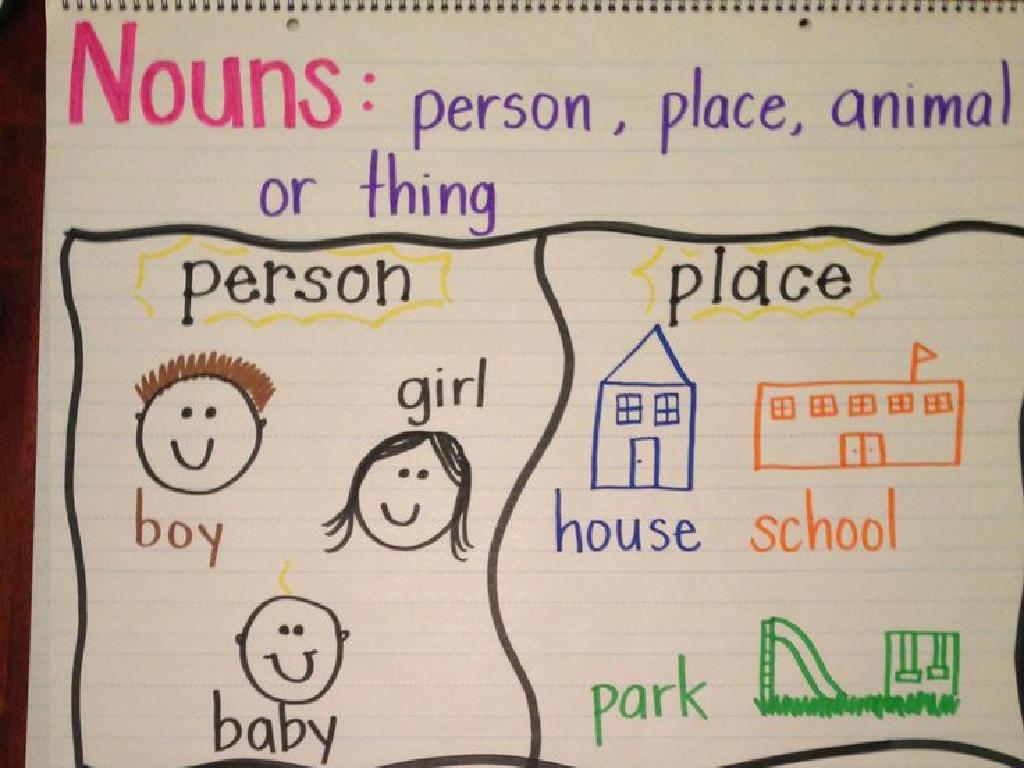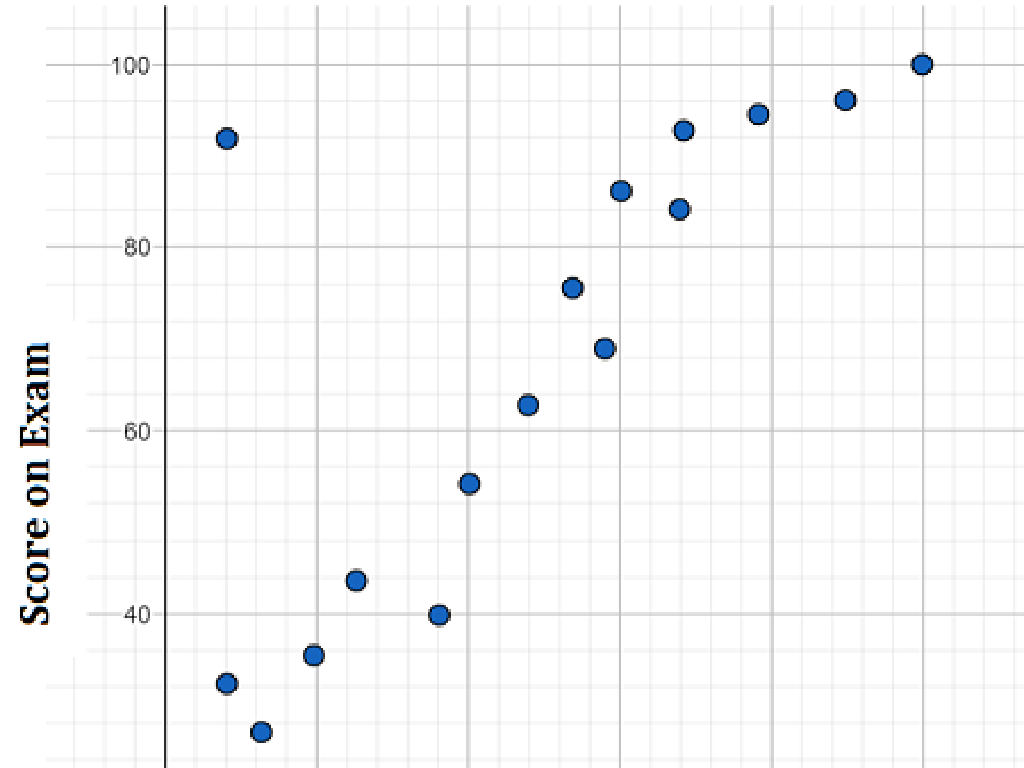Identify Equivalent Linear Expressions: Word Problems
Subject: Math
Grade: Eighth grade
Topic: Equivalent Expressions
Please LOG IN to download the presentation. Access is available to registered users only.
View More Content
Identifying Equivalent Linear Expressions
– Deciphering algebraic language
– Algebra uses symbols to represent numbers and operations.
– Equivalent expressions in word problems
– Learn to translate word problems into algebraic expressions.
– Real-world applications
– Use algebra to solve problems in areas like finance and engineering.
– Practice problem-solving skills
|
This slide introduces students to the concept of equivalent linear expressions within the context of algebraic word problems. Begin by explaining the basic language of algebra, including variables, constants, and operations. Emphasize the importance of understanding how to translate real-world situations into algebraic expressions. Provide examples of how equivalent expressions are used in various real-life scenarios, such as calculating interest or determining the cost of materials for a project. Encourage students to develop their problem-solving skills by practicing with word problems that require identifying and creating equivalent expressions. The goal is to help students see the practical application of algebra in everyday life and to become comfortable with manipulating expressions to find solutions.
Understanding Equivalent Expressions
– Define equivalent expressions
– Expressions with the same value, despite different forms
– Simple expression examples
– For instance, 3(x + 4) and 3x + 12 are equivalent
– Properties of operations
– Commutative, associative, distributive properties aid equivalence
– Creating equivalent expressions
– Use properties to rewrite expressions in various forms
|
This slide introduces the concept of equivalent expressions, which are different algebraic expressions that have the same value. Start by defining equivalent expressions and provide simple examples to illustrate the concept. Explain how the properties of operations, such as the commutative, associative, and distributive properties, are used to create equivalent expressions. Emphasize the importance of these properties in simplifying and solving algebraic expressions. Encourage students to practice creating their own sets of equivalent expressions using these properties. This foundational understanding will be crucial for solving more complex word problems involving equivalent expressions.
Properties of Operations: Building Blocks of Equivalent Expressions
– Commutative Property: Addition/Multiplication
– Order doesn’t affect sum/product: a + b = b + a or ab = ba
– Associative Property: Addition/Multiplication
– Grouping doesn’t change sum/product: (a + b) + c = a + (b + c)
– Distributive Property: A Key Player
– Multiply across addition/subtraction: a(b + c) = ab + ac
– Applying Properties to Word Problems
– Use properties to simplify and solve expressions in problems
|
This slide introduces the fundamental properties of operations that are essential for understanding equivalent linear expressions. The commutative property allows us to rearrange numbers when adding or multiplying without changing the result. The associative property shows that grouping numbers differently does not affect the sum or product. The distributive property is crucial for expanding expressions and solving equations. Students should apply these properties to word problems to identify equivalent expressions, which is a key skill in algebra. Provide examples of word problems where these properties are used to simplify expressions and find solutions. Encourage students to practice these properties with various exercises.
Breaking Down Word Problems
– Identify key information
– Look for numbers, operations, and relationships.
– Translate words to expressions
– Convert phrases into variables and operations.
– Use properties to simplify
– Apply distributive/associative properties.
– Compare algebraic expressions
– Determine if expressions are equivalent.
|
This slide aims to equip students with strategies to tackle word problems involving equivalent linear expressions. Start by identifying crucial numerical information and the relationships between the quantities described in the problem. Teach students how to translate descriptive phrases into algebraic expressions using variables and mathematical operations. Emphasize the use of properties like distributive and associative to simplify expressions for easier comparison. Finally, guide students through the process of determining the equivalence of different algebraic expressions by comparing their simplified forms. Provide examples and practice problems to reinforce these concepts.
Solving Word Problems: Equivalent Expressions
– Read the problem carefully
– Find variables and constants
– Variables are unknowns, constants have fixed values
– Translate to an algebraic expression
– Use math symbols to represent the problem
– Check expression equivalence
– Ensure the expressions represent the same value
|
This slide is aimed at teaching students how to approach word problems that involve equivalent linear expressions. Start by reading the problem thoroughly to understand the scenario. Next, identify the variables (letters representing unknown quantities) and constants (numbers with a fixed value). Then, translate the word problem into an algebraic expression using appropriate mathematical symbols. Finally, check if the derived expressions are equivalent by simplifying them or using substitution. Encourage students to practice with various word problems to become proficient at identifying equivalent expressions.
Finding Equivalent Expressions
– Apply properties for equivalence
– Use distributive/commutative property to rewrite expressions
– Substitute values to check equivalence
– Plug in numbers for variables to see if expressions match
– Discuss equivalence reasoning
– Understand why different expressions can represent the same value
– Class activity: Find equivalents
|
This slide introduces students to the concept of finding equivalent linear expressions through the application of mathematical properties and substitution. Start by explaining the distributive and commutative properties, which are often used to find equivalent expressions. Then, demonstrate how substituting values into different expressions can verify their equivalence. Discuss with the class why expressions may look different but represent the same value. For the class activity, provide students with a set of expressions and ask them to find and verify equivalent expressions using the properties and substitution. This will help solidify their understanding of the concept. Possible activities include pairing students to solve problems, creating a worksheet with a variety of expressions to match, or using an interactive whiteboard for live demonstrations.
Class Activity: Equivalent Linear Expressions
– Work on practice problems together
– Explain your problem-solving process
– Share how you determined expressions are equivalent
– Discuss and correct any misconceptions
– Identify common errors and learn why they happen
– Receive and apply feedback
– Understand how feedback improves your skills
|
This slide is designed for an interactive class activity focused on solving word problems involving equivalent linear expressions. Start by presenting a problem to the class and work through it together, encouraging students to participate in each step. Ask students to explain their reasoning as they solve the problems to foster a deeper understanding. Be attentive to any misconceptions that arise, discuss them openly, and provide clear explanations to correct misunderstandings. Offer constructive feedback on their approaches and solutions, and guide students on how to incorporate this feedback into their work. Possible activities include solving problems on the board, peer review of solutions, or group discussions on different solving strategies.
Group Activity: Crafting Word Problems
– Form groups and create word problems
– Swap problems with another group
– Solve the exchanged problems
– Present solutions and discuss
– Share how you solved the problems and the strategies used
|
This interactive group activity is designed to engage students in creating and solving equivalent linear expression word problems. Divide the class into small groups and instruct each group to come up with a unique word problem that involves equivalent linear expressions. Once the problems are created, have each group exchange their problem with another group for them to solve. This will not only test their problem-solving skills but also their ability to understand and interpret problems created by their peers. After solving, each group will present their solutions to the class and discuss the different approaches taken. Encourage creativity in problem creation and emphasize the importance of clear communication. Possible activities could include real-life scenarios such as budgeting, measuring ingredients for a recipe, or calculating distances traveled. The teacher should circulate to offer guidance and ensure that the problems are appropriate for the level of the class.
Class Activity: Equivalent Expression Challenge
– Teams solve expression challenges
– Use whiteboards for solutions
– Visual aid for problem-solving
– Discuss various solving approaches
– Compare and contrast methods
– Share different solutions with class
– Encourages collaborative learning
|
Divide the class into small teams and present them with word problems that require identifying equivalent linear expressions. Provide whiteboards and markers for each team to work out their solutions visually. This will allow for easy sharing and discussion later. After solving, facilitate a discussion where each team explains their approach to finding the equivalent expressions. Highlight the importance of understanding that different methods can lead to the same solution, reinforcing the concept of equivalence. Encourage students to ask questions and provide feedback on each other’s methods. This activity aims to promote teamwork, enhance problem-solving skills, and deepen understanding of equivalent expressions through peer learning.
Wrapping Up: Equivalent Linear Expressions
– Review of key concepts
– Significance of equivalent expressions
– Understanding these concepts is crucial for solving algebraic equations.
– Homework assignment given
– Complete the worksheet on identifying equivalent expressions.
– Encouragement for practice
– Practice is essential to master the skills learned today.
|
As we conclude today’s lesson on equivalent linear expressions, it’s important to recap the main points and emphasize the importance of mastering this concept for future math success. The homework is a practice worksheet that will help reinforce today’s learning. Encourage students to attempt all problems and remind them that practice is key to becoming proficient in identifying equivalent expressions. The worksheet should cover a variety of word problems to ensure students can apply the concept in different contexts. During the next class, allocate time to discuss any challenges students faced with the homework.

